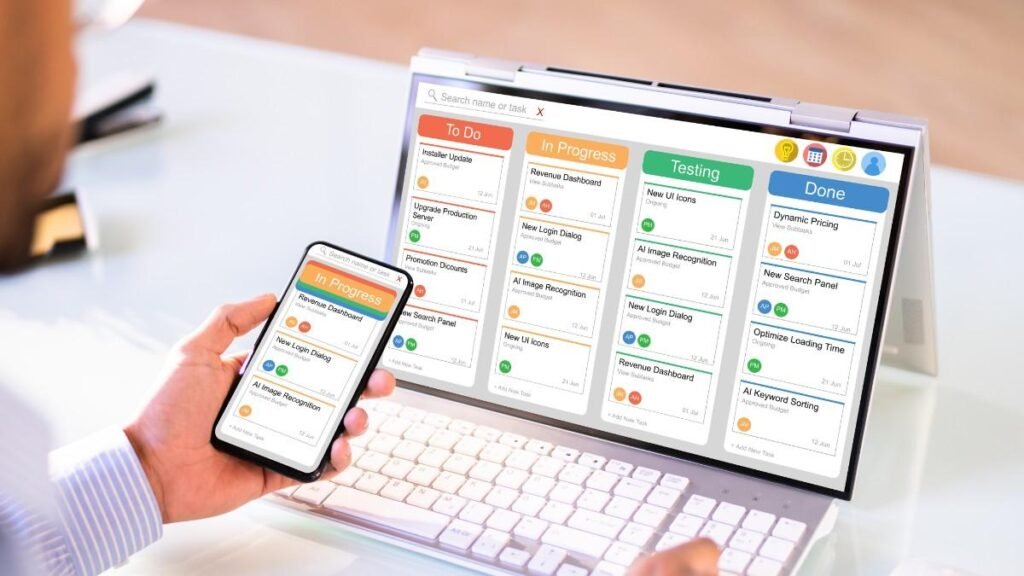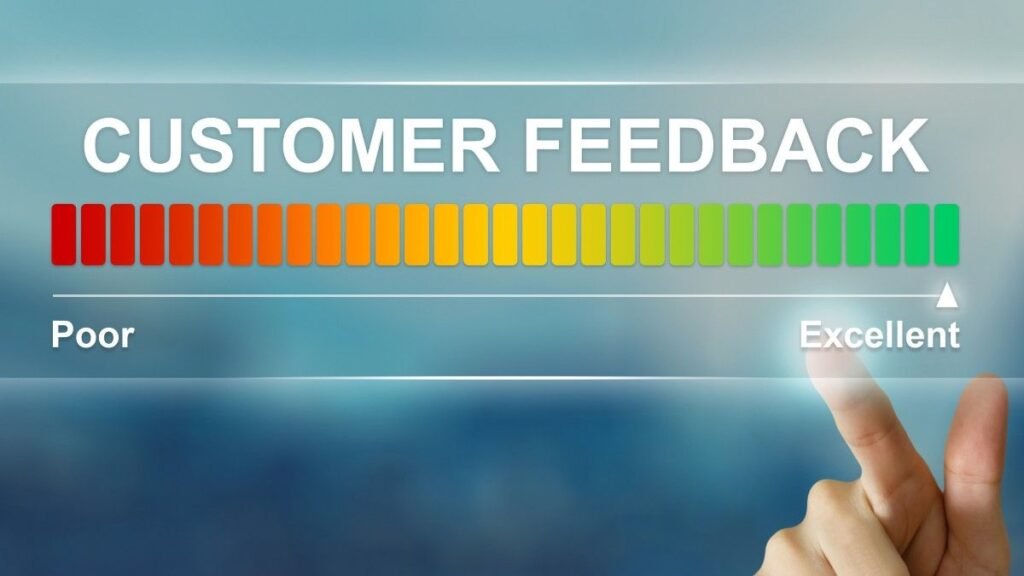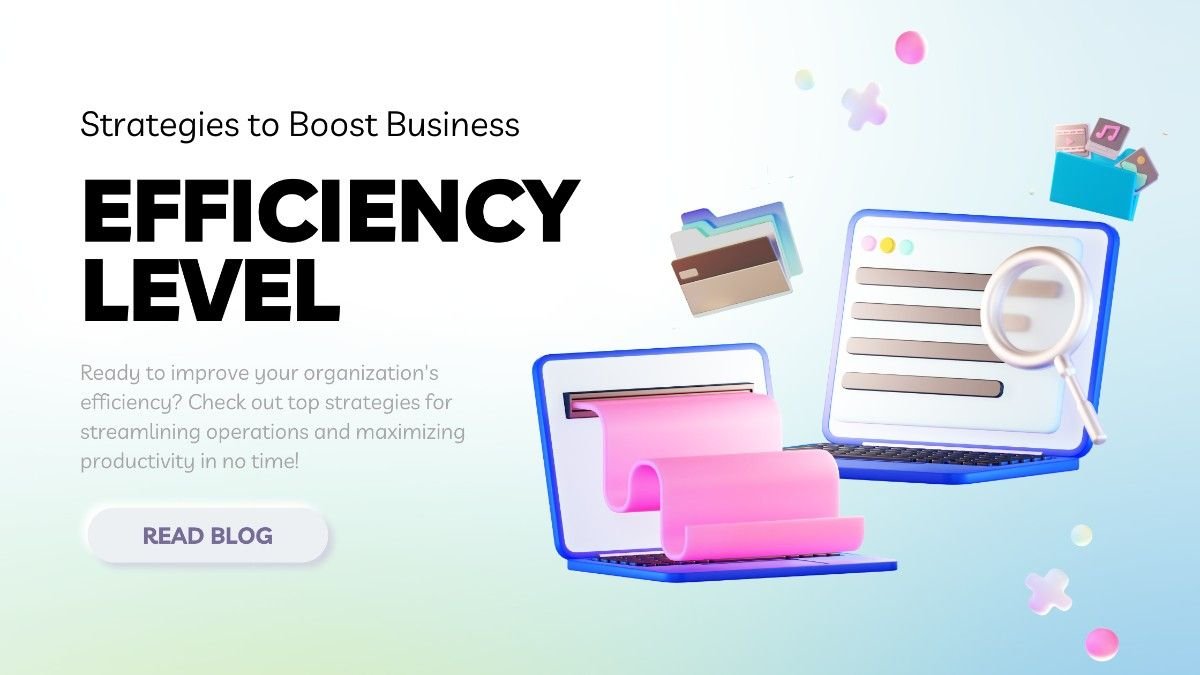Efficiency is a crucial component of any company’s success or failure in today’s competitive corporate climate. Reaching high degrees of efficiency implies simplifying processes, the best use of resources, and the reduction of pointless stages.
This helps a business to raise the general quality of its goods or services, lower expenses, and boost output. Still, increasing efficiency calls for working smarter rather than only faster. To make sure every area of your company is running it should combine technology, procedures, and human capital.
This post will go over some of the best ways to improve your company’s efficiency, enabling you to keep ahead of the competition and keep operating expenses under control.
1. Automate Routine Tasks
One of the simplest and most effective ways to boost efficiency is by automating routine jobs. Manual processes such as data entry, scheduling, and reporting can be time-consuming and prone to error. By automating these tasks, you free up your employees’ time to focus on more strategic and creative activities.
Benefits of Automation:
- Reduced errors: Automation ensures that tasks are done accurately, reducing the chance of human error.
- Increased speed: Automated systems can complete repetitive tasks faster than any manual process.
- Cost savings: Reducing the need for manual labor on repetitive tasks can significantly cut down operational costs.
Popular tools like Asana for project management, Zapier for automating workflows, and HubSpot for automating marketing processes can help businesses streamline their operations efficiently.
2. Embrace Technology and Digital Tools

In the digital age, companies that are slow to adopt new technology often fall behind their more tech-savvy competitors. Adopting the latest software tools and technologies can boost efficiency across the board, from customer relations to internal communication and project management.
Key Areas Where Technology Can Improve Efficiency:
- Communication: Tools like Slack, Microsoft Teams, and Zoom facilitate better collaboration, especially for remote and hybrid teams.
- File management: Cloud storage solutions like Google Drive and Dropbox help teams share and collaborate on documents in real-time.
- Customer service: AI-powered chatbots can handle basic customer service queries, freeing up your customer support team to deal with more complex issues.
The key is to choose technologies that align with your business’s specific needs and integrate them seamlessly into your daily operations.
3. Streamline Processes with Lean Management
Lean management is a methodology that aims to reduce waste in processes and create more value for customers. It emphasizes efficiency by focusing on what matters most to the customer and eliminating anything that doesn’t contribute to the final product.
How to Implement Lean Management:
- Map out processes: Create a visual representation of your processes to identify areas where time, effort, or resources are being wasted.
- Identify bottlenecks: Pinpoint the stages where work slows down or piles up and address these bottlenecks to ensure a smoother workflow.
- Continual improvement: Lean management is about constant improvement, so always be on the lookout for ways to refine your processes further.
By focusing on lean management, your organization can become more agile, adaptable, and customer-focused.
4. Invest in Employee Training and Development

An organization’s efficiency is only as good as the people working in it. Ensuring that your employees have the necessary skills and training can make a massive difference in productivity and job satisfaction.
Key Benefits of Employee Training:
- Enhanced skills: Training employees to use the latest tools and techniques enables them to complete their work more effectively.
- Higher morale: When employees feel competent and supported, they are more likely to be engaged and motivated.
- Reduced turnover: Employees who feel they are growing in their careers are less likely to leave, which saves the organization money in hiring and onboarding new staff.
Offer opportunities for professional development through workshops, online courses, or mentorship programs to create a culture of continuous learning.
5. Implement Clear and Open Communication Channels
A lack of clear communication can lead to confusion, errors, and wasted time. Establishing effective communication channels is vital to ensure that everyone is on the same page, and tasks are executed efficiently.
Best Practices for Improving Communication:
- Weekly meetings: Regularly scheduled meetings help teams stay informed and aligned on project goals.
- Clear reporting structure: Make sure everyone knows who to report to and who is responsible for what.
- Feedback loops: Encourage open feedback between managers and employees to ensure continuous improvement and clarity.
Efficient communication helps avoid misunderstandings and ensures that projects move forward smoothly.
6. Set Clear Goals and Prioritize Tasks

Without clear goals, employees may struggle to understand what’s most important, leading to inefficiencies. Clearly defined goals help teams focus on tasks that directly contribute to the company’s success.
Steps to Set Effective Goals:
- SMART goals: Ensure that goals are Specific, Measurable, Achievable, Relevant, and Time-bound. This keeps everyone focused and accountable.
- Task prioritization: Use project management tools to prioritize tasks based on their urgency and importance. This avoids time being spent on low-priority tasks that don’t add much value.
- Regular reviews: Continuously review progress toward goals and adjust strategies if necessary to stay on track.
When employees understand what they are working toward, they are more likely to stay motivated and efficient.
7. Outsource Non-Essential Tasks
Outsourcing is another way to enhance your organization’s efficiency. By outsourcing tasks that are not part of your core business functions—such as accounting, marketing, or IT support—you allow your in-house team to focus on what they do best.
Benefits of Outsourcing:
- Cost-effective: Outsourcing certain tasks can save money compared to hiring full-time employees for every role.
- Access to expertise: Outsourcing gives you access to specialized skills and expertise that may not exist within your current team.
- Flexibility: You can scale outsourced tasks up or down depending on your organization’s needs.
Popular platforms such as Upwork and Fiverr provide access to a global pool of skilled professionals for a range of business tasks.
8. Utilize Data Analytics for Better Decision Making

Data is one of the most powerful tools in modern business, and leveraging it correctly can vastly improve your organization’s efficiency. Data analytics helps businesses understand where their processes are lagging and what changes need to be made.
How Data Analytics Can Boost Efficiency:
- Tracking performance: Monitor the performance of employees, projects, and departments in real-time to identify areas for improvement.
- Customer insights: Data can provide valuable insights into customer behaviors, allowing you to refine your services and products for better results.
- Operational improvements: By tracking key performance indicators (KPIs), businesses can make data-driven decisions that enhance efficiency.
Using tools like Google Analytics, Power BI, or Tableau can give you the data you need to make more informed decisions.
9. Foster a Collaborative Work Environment
A collaborative work environment encourages innovation, improves problem-solving, and ensures that teams work efficiently together. Encouraging collaboration between departments and teams helps break down silos, improves communication, and increases productivity.
Ways to Encourage Collaboration:
- Cross-departmental projects: Assign projects that require input from multiple departments to encourage knowledge sharing and teamwork.
- Collaboration tools: Use platforms like Trello, Basecamp, or Asana to enable teams to work together effectively, even if they’re in different locations.
- Team-building activities: Regular team-building exercises can strengthen relationships and enhance collaboration among team members.
A more collaborative workforce can solve problems faster and generate more innovative solutions.
10. Focus on Customer Feedback

Lastly, the voice of the customer is one of the most valuable assets when improving organizational efficiency. By regularly collecting and acting on customer feedback, you can fine-tune your operations to better meet their needs, which in turn boosts satisfaction and retention.
Ways to Collect and Utilize Customer Feedback:
- Surveys and reviews: Regularly survey customers to understand their needs and concerns.
- Monitor social media: Track customer sentiment on social media to gain real-time feedback on your services.
- Implement changes: Act on the feedback to make necessary changes in your product, services, or customer support.
Responding effectively to customer feedback can streamline your operations and increase customer satisfaction, ultimately making your organization more efficient.
Conclusion
Improving organizational efficiency is a continuous process that requires a combination of technological adoption, human resource development, process optimization, and clear communication.
By implementing these strategies, your organization can not only boost productivity but also stay agile in a competitive marketplace. Whether it’s automating routine tasks, investing in employee development, or setting clear goals, focusing on efficiency will ultimately lead to long-term success.

